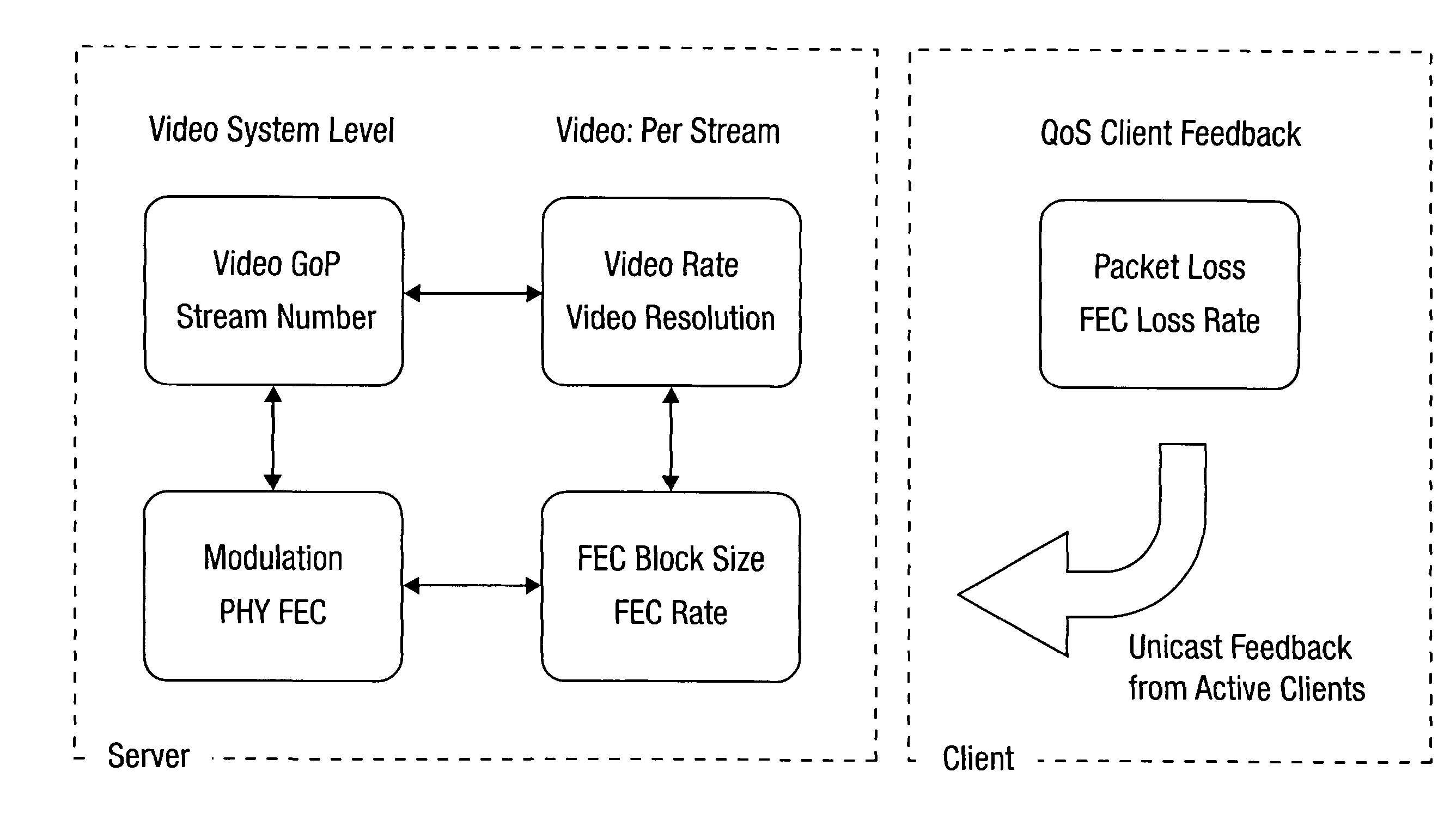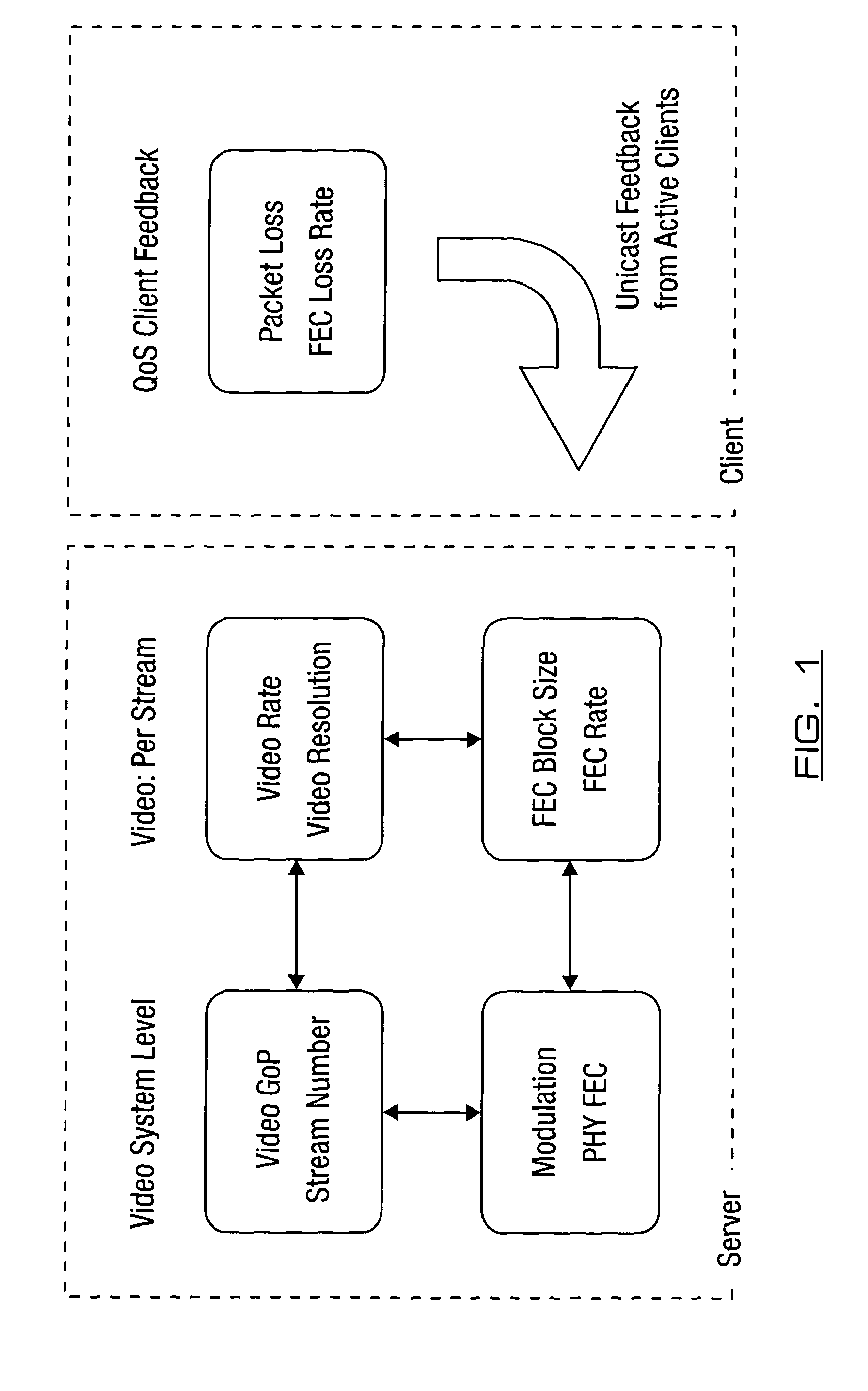Data transmission apparatus, system and method
a data transmission and data technology, applied in the field of data transmission apparatus, system and method, can solve the problems limited services provided by these systems, and limited user interaction, so as to minimise the transmission of unsatisfactory data and minimise the effect of unsatisfactory data transmission
- Summary
- Abstract
- Description
- Claims
- Application Information
AI Technical Summary
Benefits of technology
Problems solved by technology
Method used
Image
Examples
Embodiment Construction
[0105]Referring now to FIG. 1 there is shown the concept of server-client adaptation for multicast distribution systems. Active client devices (which can be mobile or fixed) extract quality of service information from the received multicast streams, and send this information as feedback information back to the server as a unicast transmission. The feedback information is then used to form a statistical error surface, which is used in the adaptation of global stream parameters, such as video format structure, stream number, and wireless modulation and coding scheme. Local stream parameters can also be adjusted, such as video rate and resolution, and the cross packet FEC rate and block size. Parameters can be adjusted independently to allow quality to be mapped as required to particular video channels. Statistical multiplexing can also be supported, where video rates are set dynamically for each video data stream.
[0106]FIG. 2 illustrates a wireless multicast network which embodies var...
PUM
 Login to View More
Login to View More Abstract
Description
Claims
Application Information
 Login to View More
Login to View More - R&D
- Intellectual Property
- Life Sciences
- Materials
- Tech Scout
- Unparalleled Data Quality
- Higher Quality Content
- 60% Fewer Hallucinations
Browse by: Latest US Patents, China's latest patents, Technical Efficacy Thesaurus, Application Domain, Technology Topic, Popular Technical Reports.
© 2025 PatSnap. All rights reserved.Legal|Privacy policy|Modern Slavery Act Transparency Statement|Sitemap|About US| Contact US: help@patsnap.com



